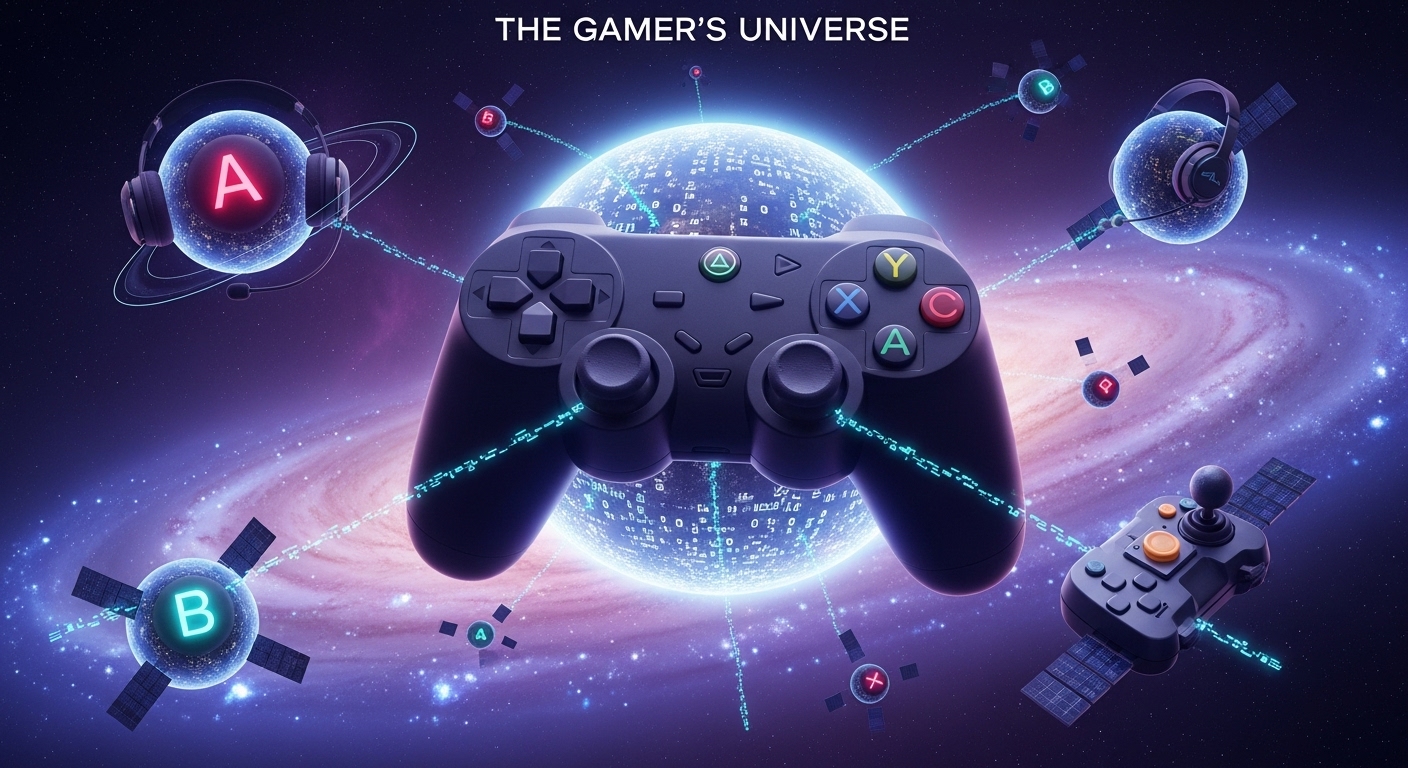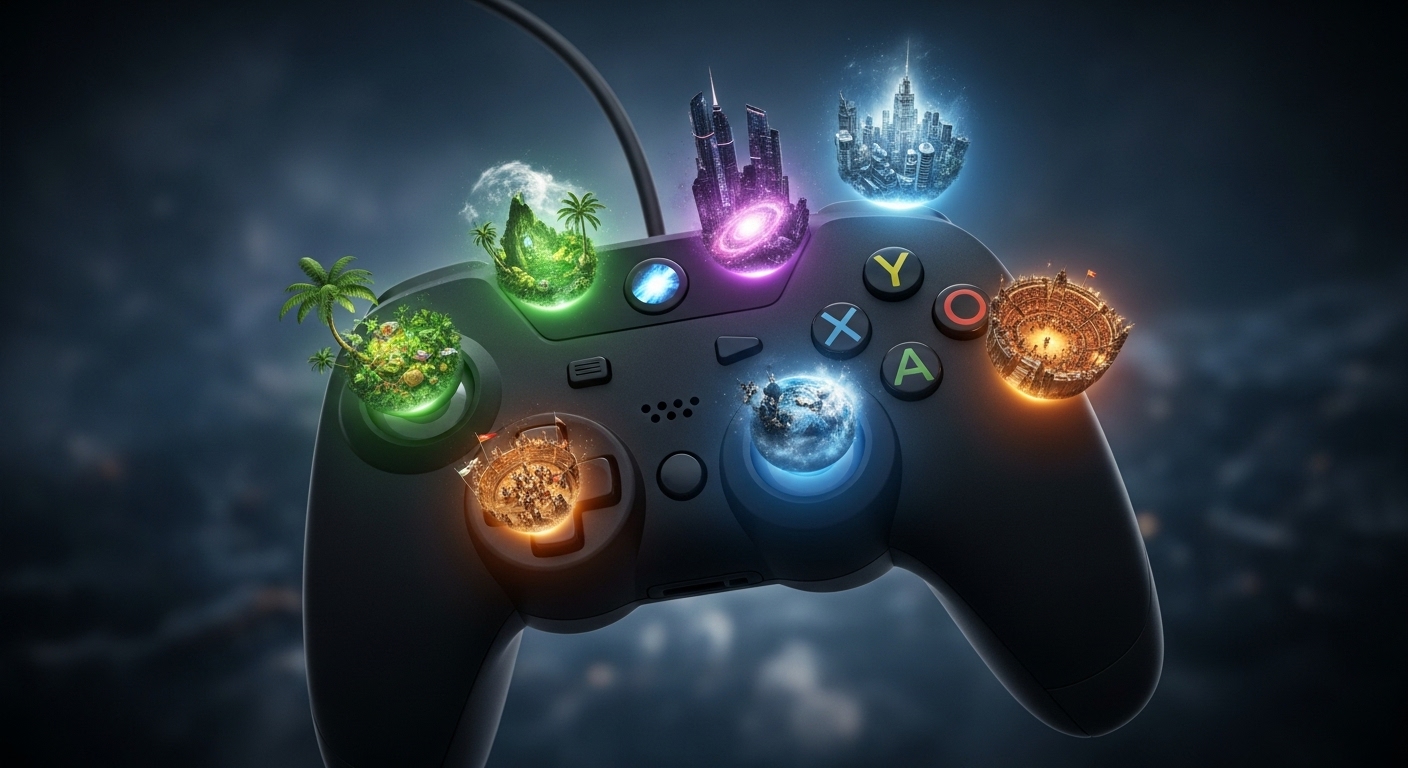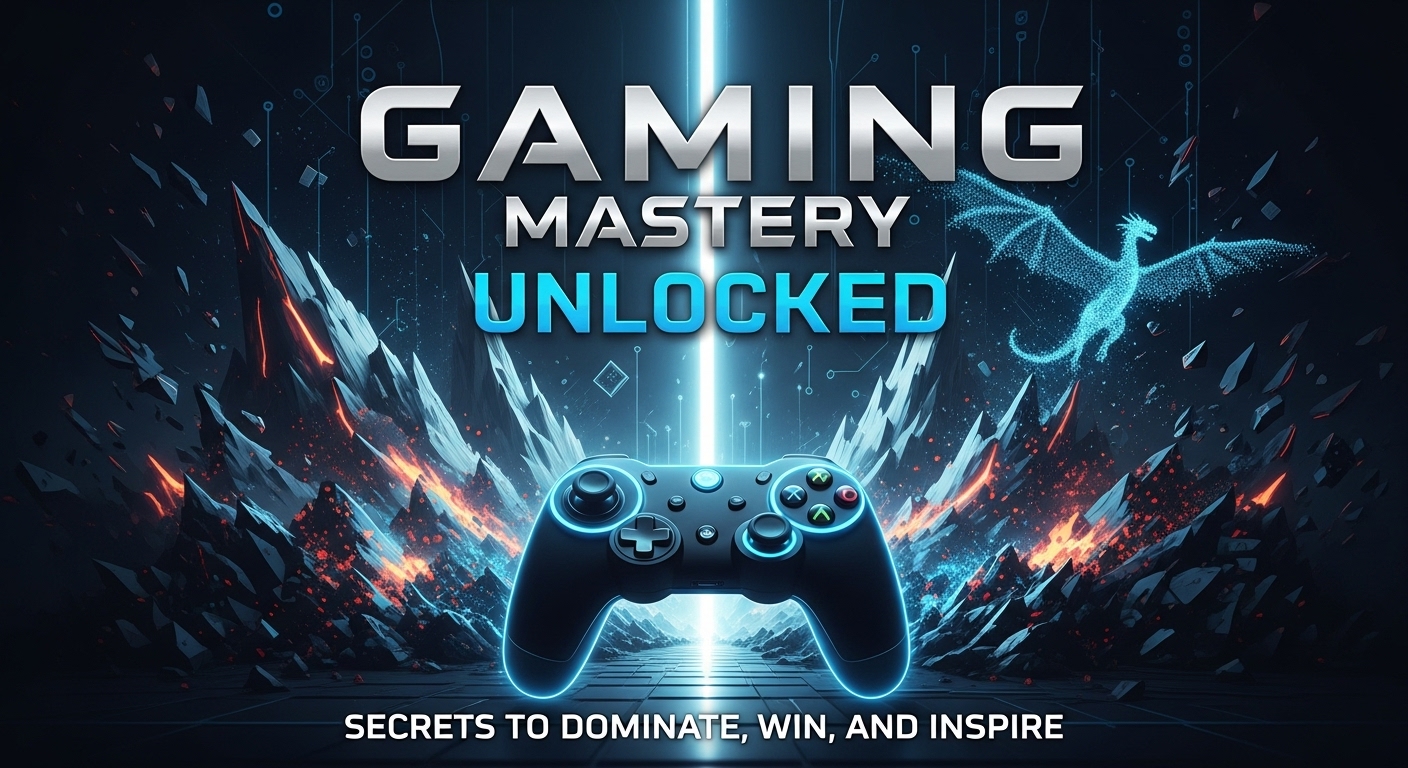Gaming has grown from a small niche hobby to one of the most dominant forces in entertainment and technology. What started as a simple pastime played on bulky arcade machines has evolved into an industry larger than the film and music industries combined. Gaming is no longer just about fun; it’s about culture, storytelling, community, and even personal identity. This blog explores how gaming evolved, how it shapes society today, and where it’s heading in the future.
The Humble Beginnings of Gaming
The origins of gaming trace back to the early 1950s and 1960s, when scientists and engineers experimented with interactive computer programs. The earliest known video game is often considered to be Tennis for Two (1958), a simple tennis simulation created by physicist William Higinbotham. Soon after came Spacewar! in 1962, developed by MIT students — a space combat game that ran on a PDP-1 computer.
However, the true beginning of the gaming industry came in the 1970s with the advent of arcade machines. Pong, released in 1972 by Atari, became the first commercially successful arcade game. Players were fascinated by its simple yet addictive gameplay, and it sparked a revolution. Arcades soon became the social hubs of the era, with people gathering to compete for high scores.
The Rise of Home Consoles
As technology improved, the desire to bring gaming into homes grew. The first home consoles, such as the Magnavox Odyssey (1972), allowed players to experience video games without visiting an arcade. However, it was Atari’s Video Computer System (VCS), later known as the Atari 2600, that truly popularized home gaming.
This period saw the rise of iconic titles like Space Invaders, Pac-Man, and Donkey Kong. These games introduced the concept of characters and worlds that players could connect with emotionally, setting the stage for the storytelling potential that gaming would later explore.
The Crash of 1983: A Hard Lesson for the Industry
The early 1980s were a golden era for video games, but the industry’s rapid expansion led to oversaturation. Poor-quality games, such as the infamous E.T. the Extra-Terrestrial, flooded the market. Consumers lost confidence, and sales plummeted. The North American video game crash of 1983 nearly destroyed the industry.
But from that failure came renewal. Japanese companies like Nintendo and Sega entered the scene with fresh ideas, strict quality control, and iconic characters that would shape gaming for generations.
The Nintendo and Sega Era: A Battle for Supremacy
In 1985, Nintendo released the Nintendo Entertainment System (NES), introducing classics like Super Mario Bros., The Legend of Zelda, and Metroid. These games weren’t just fun—they had depth, creativity, and charm. Mario became a household name, and Nintendo became synonymous with gaming.
Sega responded with its Sega Genesis, featuring Sonic the Hedgehog—a faster, edgier mascot aimed at a slightly older audience. The “console wars” between Nintendo and Sega defined gaming in the late 1980s and early 1990s. It was an era of innovation, as both companies pushed each other to deliver better graphics, sound, and gameplay.
The 3D Revolution and the Birth of Modern Gaming
The mid-1990s marked a monumental shift as gaming transitioned from 2D to 3D. With consoles like the Sony PlayStation and the Nintendo 64, players could explore immersive 3D worlds for the first time. Titles such as Super Mario 64, Final Fantasy VII, and The Legend of Zelda: Ocarina of Time set new standards for storytelling, mechanics, and design.
This period also saw the rise of mature gaming experiences. Games like Metal Gear Solid and Resident Evil introduced cinematic storytelling and deeper narratives. Gaming was no longer just for children; it became an art form capable of emotional depth and complexity.
The PC Gaming Boom
While consoles dominated living rooms, PC gaming carved its own powerful identity. The 1990s and early 2000s saw an explosion of creativity on the PC platform. Titles like Doom, StarCraft, Half-Life, and The Sims showcased what was possible with the flexibility of computers.
PC gaming introduced the world to online multiplayer experiences long before consoles caught up. Quake, Counter-Strike, and World of Warcraft built massive communities that connected players across the globe. Mods, custom maps, and player-driven content flourished, laying the foundation for today’s indie game scene.
The Online Revolution: Connecting the World
The rise of broadband internet transformed gaming forever. Multiplayer gaming, once limited to local setups, became a global phenomenon. Services like Xbox Live and PlayStation Network made it easy to connect with friends, chat, and compete online.
Massively Multiplayer Online Role-Playing Games (MMORPGs) like World of Warcraft and RuneScape turned virtual worlds into social spaces where players formed friendships, alliances, and rivalries. For many, these games became second homes—a place of belonging and adventure.
Online gaming also birthed competitive gaming, or esports. What began as small tournaments grew into professional leagues, with games like Counter-Strike, League of Legends, and Dota 2 drawing millions of viewers and offering multi-million-dollar prizes.
The Mobile Gaming Explosion
In the late 2000s and early 2010s, smartphones changed everything again. Suddenly, games were accessible to anyone with a mobile device. Titles like Angry Birds, Candy Crush Saga, and Clash of Clans captured a massive audience of casual players.
Mobile gaming broke barriers by making gaming more inclusive and accessible. It blurred the lines between traditional gamers and non-gamers. For the first time, people who had never owned a console or gaming PC were playing games daily.
Despite criticism from some hardcore gamers, the mobile market became the largest segment of the gaming industry, generating billions in revenue. It also inspired new business models like free-to-play and in-app purchases, which changed how games were developed and monetized.
The Rise of Streaming and Content Creation
The 2010s brought another cultural shift with the rise of platforms like Twitch and YouTube Gaming. Gaming was no longer just something people played—it became something millions watched. Streamers and content creators turned gaming into entertainment, building massive communities around their personalities and gameplay styles.
Let’s Plays, live commentary, and gaming reviews became a new form of media. People tuned in not only to watch skillful players but also to connect with their humor, personality, and authenticity. Gaming became a social experience even for those who never picked up a controller.
This new ecosystem gave rise to gaming influencers, who now shape trends, drive sales, and even collaborate with developers to create content. The relationship between players and developers became more interactive and transparent than ever before.
Esports: From Hobby to Global Stage
Few could have predicted how massive esports would become. What started as small competitions in LAN cafes evolved into stadium-filling events watched by millions around the world. Games like League of Legends, Valorant, CS:GO, and Fortnite dominate the competitive scene.
Esports athletes train rigorously, with schedules comparable to traditional sports players. They have coaches, analysts, nutritionists, and sponsors. Universities now offer scholarships for esports, and major brands invest heavily in the scene.
The cultural impact of esports is undeniable. It has given gaming legitimacy as a professional pursuit and brought together fans from all walks of life. It has also challenged outdated stereotypes about gamers, proving that gaming requires strategy, coordination, and teamwork.
Gaming as Art and Storytelling
In recent years, gaming has reached new artistic heights. Games like The Last of Us, Journey, Red Dead Redemption 2, and Hollow Knight have demonstrated that interactive media can be as emotionally powerful as films or books. These experiences combine visual artistry, music, and storytelling in ways no other medium can.
Players don’t just observe stories—they participate in them. This interactivity gives gaming a unique emotional power. When players make choices that shape outcomes, the story becomes deeply personal.
Independent developers have also flourished, creating innovative and experimental titles. Games like Celeste, Undertale, and Hades have proven that passion and creativity matter more than big budgets.
The Psychology and Social Impact of Gaming
Gaming has long been misunderstood as a waste of time or a cause of violence. However, modern research paints a much more nuanced picture. Studies show that gaming can improve cognitive skills, problem-solving, and coordination. Cooperative games encourage teamwork, communication, and empathy.
Games also serve as a form of escapism and stress relief. During difficult times, many people turn to gaming as a way to unwind, socialize, or explore virtual worlds. Especially during global events like the pandemic, gaming became a vital way to maintain social connections.
Of course, gaming addiction and unhealthy play habits are real concerns. Like any powerful form of entertainment, balance is key. The conversation today focuses more on responsible gaming and mental well-being, rather than demonizing the medium itself.
The Technology Behind Modern Gaming
Modern gaming is built on cutting-edge technology. Graphics engines like Unreal Engine and Unity allow developers to create lifelike environments and physics systems. Real-time ray tracing and AI-driven animation blur the line between reality and simulation.
Virtual Reality (VR) and Augmented Reality (AR) have opened new frontiers of immersion. Games like Beat Saber and Half-Life: Alyx give players physical, first-person experiences that feel astonishingly real. Meanwhile, AR games like Pokémon GO blend the virtual with the real world, encouraging exploration and community interaction.
Cloud gaming is another technological leap. Services like Xbox Cloud Gaming and GeForce Now allow players to stream games without expensive hardware, making high-end gaming more accessible than ever before.
The Future of Gaming
The future of gaming is filled with possibilities. Artificial Intelligence is poised to revolutionize game design, creating dynamic worlds that adapt to player behavior. Procedural generation and machine learning could enable infinite, personalized experiences.
The concept of the “metaverse” — shared virtual worlds where people can socialize, work, and play — continues to gain traction. Gaming could become the foundation of how people interact digitally in the future, blending entertainment with social and professional experiences.
Cross-platform play is also breaking barriers between devices and ecosystems. Whether on console, PC, or mobile, players can now connect and compete seamlessly.
As technology evolves, gaming will continue to redefine how we experience stories, connect with others, and express creativity.
The Cultural Significance of Gaming Today
Gaming has become more than a pastime—it’s a cultural movement. Game soundtracks are performed by orchestras. Characters like Mario, Master Chief, and Lara Croft are global icons. Entire generations have grown up sharing gaming experiences as core memories.
Cosplay, fan art, and conventions celebrate gaming culture as much as any film festival or music event. Gaming communities on social media foster creativity, discussion, and support. Whether you’re a casual player or a hardcore competitor, there’s a place for everyone.
Gaming also continues to push boundaries of inclusivity. Developers are striving to represent diverse voices and stories, making games that reflect the real world’s richness. Accessibility options have improved dramatically, allowing players with disabilities to enjoy games fully.
Gaming and Education: Learning Through Play
Beyond entertainment, gaming has shown tremendous potential as an educational tool. Educational games make learning engaging, interactive, and fun. From teaching math and science to fostering creativity and critical thinking, games provide immersive learning environments.
Simulation games like Kerbal Space Program teach physics and engineering concepts, while strategy games like Civilization introduce players to history and resource management. Even Minecraft has been used in classrooms to teach collaboration and digital design.
Gamification — using game-like elements in education and work — has proven effective in motivating people to learn and achieve goals. The line between playing and learning continues to blur in exciting ways.
The Community Spirit of Gaming
At its heart, gaming is about connection. Whether you’re teaming up with friends in an online battle, exploring dungeons together, or just chatting on a game server, gaming fosters community. These virtual friendships often become real-life bonds that transcend geography and culture.
Online communities also support creativity and collaboration. Modding communities, for instance, expand the lifespan of games by adding new content, improving graphics, or even creating entirely new experiences.
For many, gaming communities are safe spaces — places of belonging where people can express themselves freely. The shared passion for gaming brings people together like few other hobbies can.
Conclusion: The Power and Promise of Gaming
From its humble beginnings as a few pixels on a screen to the vast, immersive worlds of today, gaming has come a long way. It’s a medium that continues to evolve, inspire, and connect people around the globe. It blends art, technology, and storytelling in ways that no other form of entertainment can.
Gaming is not just about pressing buttons or collecting points. It’s about adventure, creativity, challenge, and connection. It’s about the stories we share, the worlds we explore, and the people we meet along the way.
The future of gaming is bright. As technology continues to advance, as creativity continues to flourish, and as communities continue to grow, one thing remains certain: gaming will always be more than just a game. It’s a reflection of who we are — imaginative, curious, and endlessly driven to play.



